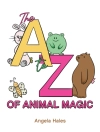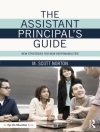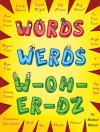‘This book is a must-read for all elementary educators. A call to action, the guide for teachers offers incredible resources, including powerful lesson plans, to engage readers in the practice of teaching mathematics for social justice in early childhood settings. An immense contribution to the conversation around social justice and mathematics in elementary education.’
Ruchi Agarwal-Rangnath
Assistant Professor, University of San Francisco
San Francisco, CA
Empower children to be the change—join the teaching mathematics for social justice movement!
We live in an era in which students of all ages have—through media and their lived experiences— a more visceral experience of social injustices. However, when people think of social justice, mathematics rarely comes to mind. With a teacher-friendly design, this book brings early elementary mathematics content to life by connecting it to the natural curiosity and empathy young children bring with them and the issues they experience.
Tested in PK-2 classrooms, the model lessons contributed in this book walk teachers through the process of applying critical frameworks to instruction, using standards-based mathematics to explore, understand, and respond to social justice issues. Learn to plan instruction that engages children in mathematics explorations through age-appropriate, culturally relevant topics such as fairness, valuing diversity and difference, representation and inequality, and environmental justice. Features include:
- Content cross-referenced by mathematical concept and social issues
- Connection to Learning for Justice’s social justice standards
- Downloadable instructional materials and lesson resources
- Guidance for lessons driven by children’s unique passions and challenges
- Connections between research and practice
Written for teachers committed to developing equitable and just practices through the lens of mathematics content and practice standards as well as social justice standards, this book will help connect content to children’s daily lives, fortify their mathematical understanding, and expose them to issues that will support them in becoming active citizens and leaders.
Cuprins
Preface
Introduction
Chapter 1: What Is Social Justice and Why Does It Matter in Teaching Mathematics?
Chapter 2: Fostering a Classroom Community for Social Justice
Chapter 3: Instructional Tools for a Social Justice Mathematics Lesson
Chapter 4: Teaching Social Justice Mathematics Lessons
Chapter 5: Social Justice Mathematics Lessons
Lesson 5.1 Exploring Fairness Through Data and Numbers
Lesson 5.2 Addressing Food Insecurity
Lesson 5.3 Same and Different: An Exploration of Identity through Geometry Shapes
Lesson 5.4 Examining Air Quality
Lesson 5.5 Family Counts! Mathematics, Family, and the Diversity Across Our Homes
Lesson 5.6 Learning From Our Animal Friends: Mathematizing With the Artwork of Ricardo Levins Morales
Lesson 5.7 Activism Through Art
Lesson 5.8 Seeing the Colors of Ourselves and Others
Lesson 5.9 Human Diversity and Disability: Do We All Have 10 Fingers?
Lesson 5.10 Feeding Ourselves and Others
Lesson 5.11 Representation Matters in Mathematics Class
Lesson 5.12 Respecting Our House: Protecting Our Salmon Neighbors
Lesson 5.13 Early Elementary Mathematics to Explore People Represented in Our World and Community
Lesson 5.14 Journey for Justice: The Farmworkers’ Movement
Chapter 6: Advice From the Field
Chapter 7: Creating Social Justice Lessons for Your Own Classroom
Appendix A: Additional Resources
Appendix B Lesson Resources
Appendix C: Education of Young Children Learning Paths (2010)
Appendix D: Social Justice Standards
Appendix E: Social Justice Topics and Mathematics Domains
Appendix F: Social Justice Mathematics Lesson Planner
References
Despre autor
Tonya Gau Bartell is currently an associate professor of mathematics education in the College of Education at Michigan State University and serves as the associate director of elementary programs. Tonya earned a BS in mathematics from St. Cloud State University, an MA in curriculum and instruction from the University of Minnesota, and a Ph D. in curriculum and instruction at the University of Wisconsin-Madison. Tonya began teaching 25 years ago as a high school mathematics teacher, including 3 years as a founding teacher in an alternative high school to support students labeled as not succeeding by the system. For the last 15 years, she has volunteered in elementary mathematics classrooms and studies elementary mathematics education.Tonya is passionate about learning about and supporting teachers in developing equitable mathematics instructional practices that recognize and transgress systemic inequity. She understands that issues of culture, race, ethnicity, identity, and power influence students’ opportunities to learn and teachers’ opportunities to teach mathematics and that these factors must be explicitly discussed and addressed if we hope to fully support equitable mathematics teaching and learning. Tonya is honored to have participated in the writing of this book and in continued efforts supporting mathematics education that explores, understands, and responds to social injustice and supports students’ learning of mathematics.












